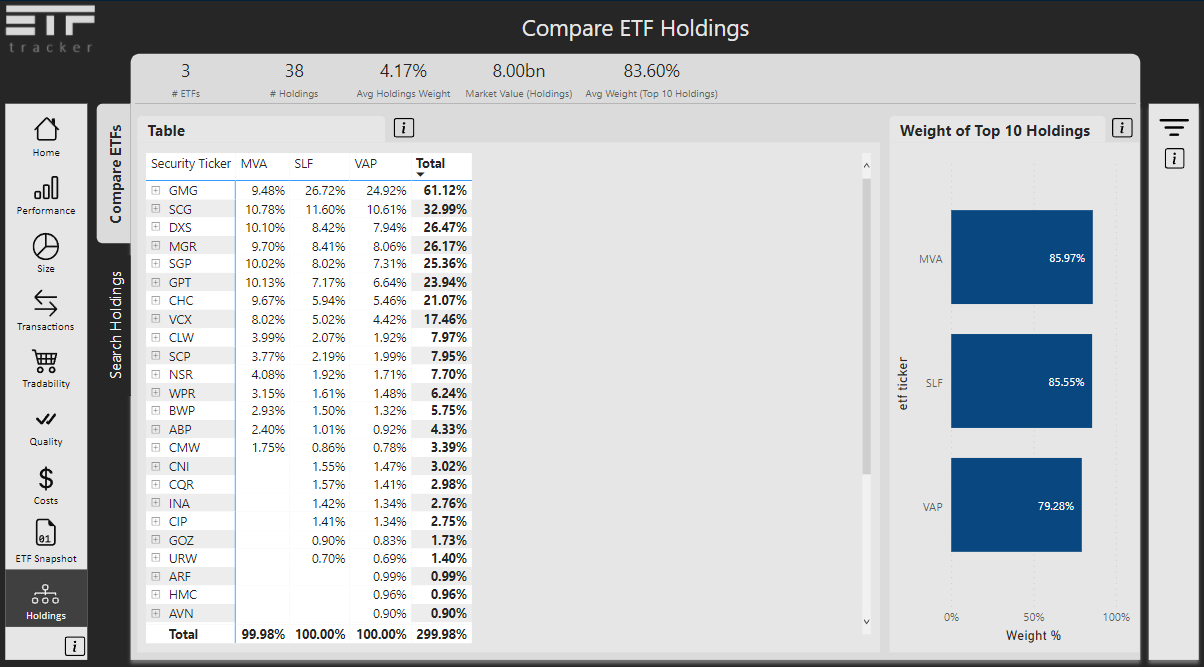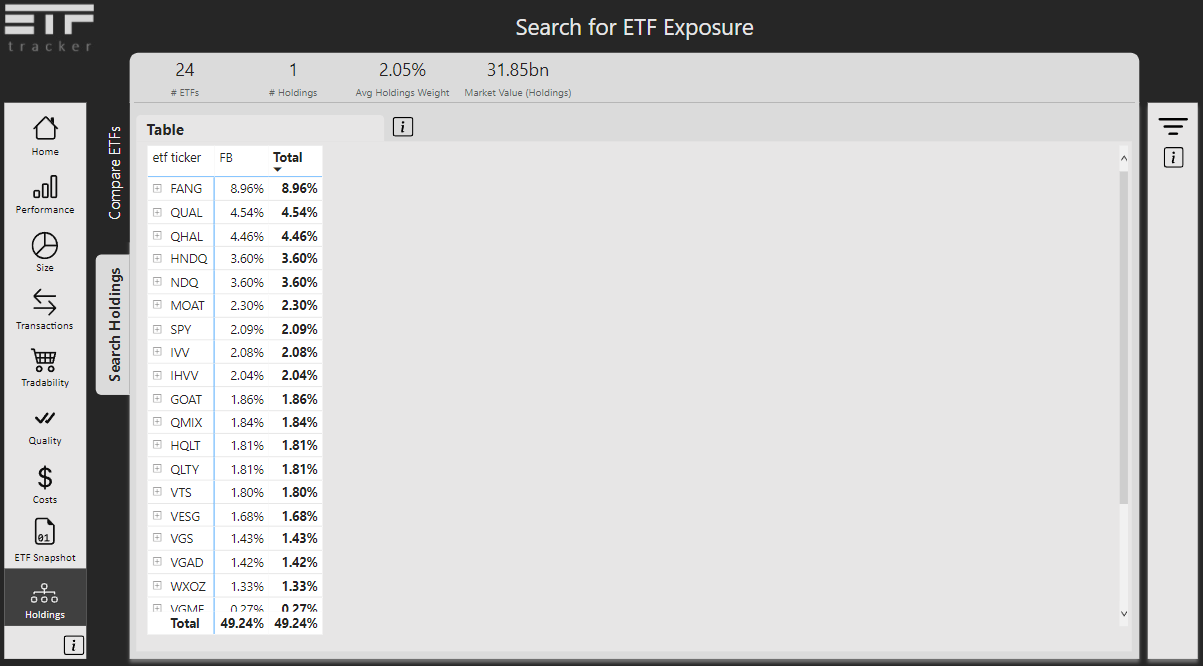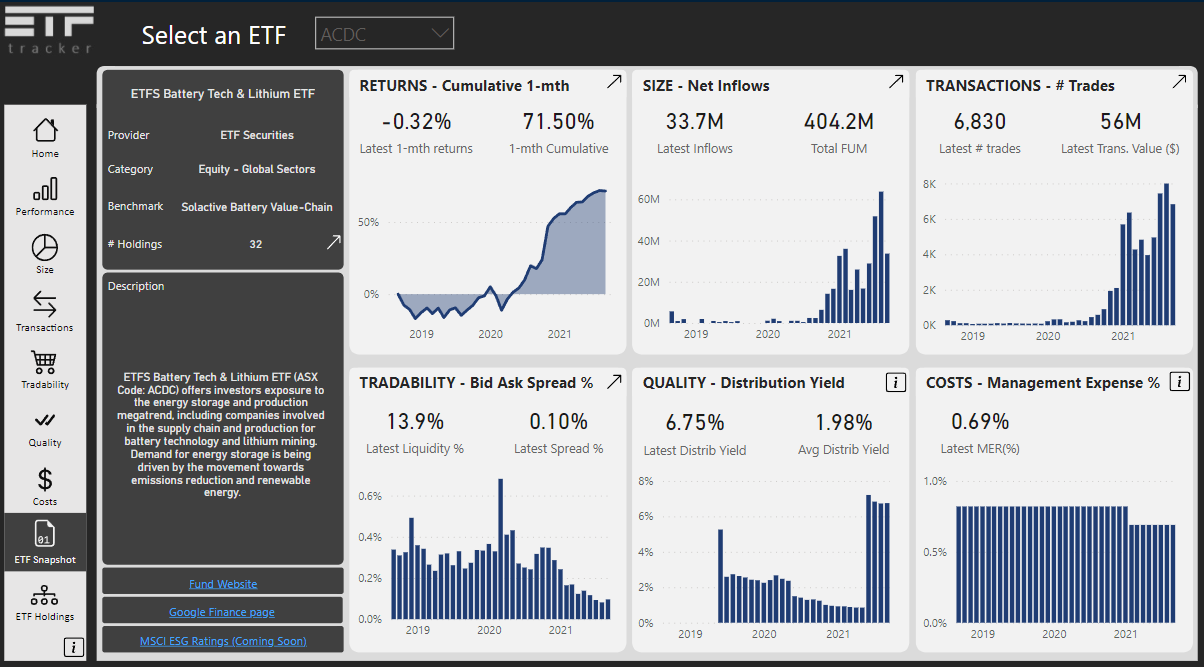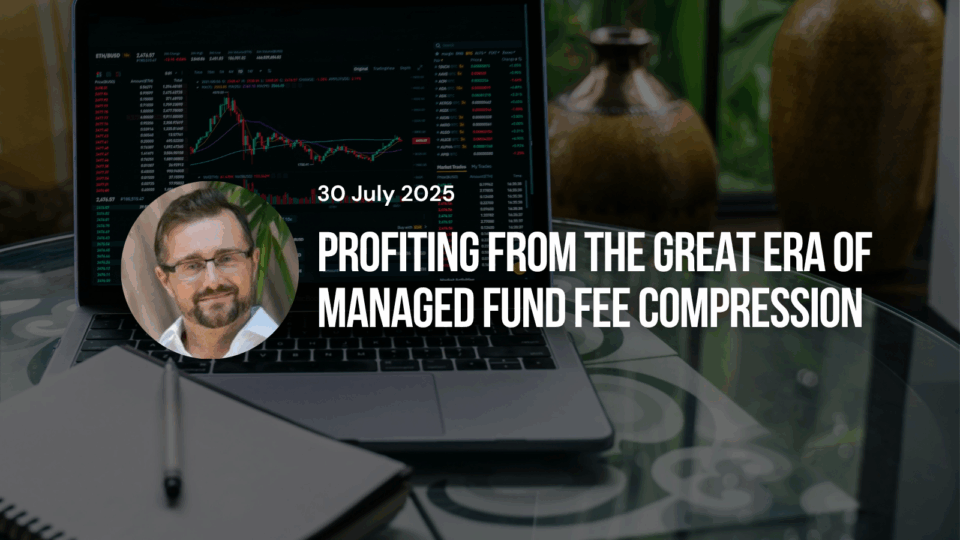
By Mark Monfort, founder & CEO of New Era Analytics
10 November 2021
ETFs have become wildly popular in the last few years. It took 18 years to get to $50 billion in FUM (funds under management) on the ASX and then less than 2 years to rise to $100 billion (and still growing).
Whether you started off thinking of them as “EFTs” or “indexes”, many things can be learned from looking at the details or as is commonly said in this space “looking under the hood”. Then you can get a better picture about the ETFs you are interested in and get to know which ones better fit your investment strategies.
Before we go on, let’s take a look at some statistics. The market (as of September 2021) is now at $125 billion in FUM across the 2 exchanges where ETFs trade (ASX and Chi-X). Of the 241 ETFs on those exchanges, 182 were passive, index-tracking ETFs and 49 are actively managed. And actively managed ETFs are growing in number as many closed-ended managed funds convert and become ETFs.
ETFs offer great exposure for investors to international markets and themes. And they are available on a local-exchanges so there’s tax efficiencies too. Having access to what is happening via the Nasdaq, S&P 500, European and Asian exchanges, all via a single investment certainly makes life easier.
Using Holdings to your advantage
Looking under the hood of ETFs means you can examine what assets the Issuer has decided to put in their basket of investments. Often an ETF will track an index and so the basket will replicate all of the stocks in the index to get similar performance.
Looking at these underlying holdings is something we’ve done to ensure we don’t unintentionally double up on stocks held by the different ETFs. We know how much crossover there is in the various ETFs portfolios. ETHI and NDQ or FAIR and VAS, all have similar holdings to one another. This makes sense as the investment theme behind these ETFs is ESG related. There are also quite strong similarities amongst ETFs in similar peer groups such as across the Property or Technology space. So it pays to “look under the hood”.

If ETF investors don’t look under the hood they might not see that they have say Apple or Facebook or Kogan or CSL across multiple ETFs. Not that it’s wrong to hold them that way but there might be more efficiencies in terms of brokerage and other fees that they can forgo if they were able to access those holdings in less assets.
Additionally, investors can also use the holdings data to search for where which ETFs have particular holdings they are interested in. For example, we can see that Facebook sits in FANG, QUAL, NDQ, MOAT, SPY, IVV, GOAT, QMIX, QLTY. VTS and many more ETFs.

Understanding the monthly trends
Another thing to note is that each month the Australian exchanges release information about various metrics that can help paint the picture about what’s going on for the ETF markets or particular ETFs. With ETFtracker, we’ve collected all these metrics going back to the start of 2017 and we’ve grouped these into various categories including Performance (total monthly returns), Size (Net Inflows and FUM), Transactions (number of trades, volume and value), Tradability (Liquidity and Spreads), Distribution Yield and Costs (MER %).
Using this info we can analyse the market as a whole or see how things like distribution yield or MER have been trending for a particular ETF. For example, we can see that ACDC has had strong cumulative 1-month returns and has seen a sharp crease in net inflows since late 2020 and has also been traded a lot more now than in early 2020. At the same time its bid ask spread has decreased as has its MER % and it’s distribution yield is up as well.

This kind of information, especially in a visual format can make life easier for investors trying to understand what is going on in a particular ETF.
About ETFtracker
With all of the above, we created a tool called ETFtracker to help (and we use it to do our own analysis too). It’s a free online platform with an app (accessible via a web browser on desktop or laptop) and which requires no installation or logging in. Because it’s browser-based it does not matter whether you’re on Windows or Mac either, it’s just there. This enables users to browse for market trends and look under the hood at the holdings of 180 of the 240 ETFs (with most of what we don’t cover being active ETFs that don’t often show their holdings anyway). We also have a blog, podcast, videos and more on the website and various social media channels.
![]()
Watch the video “In conversation with Mark Monfort, ETFtracker” with Rachel Waterhouse, CEO, ASA.






